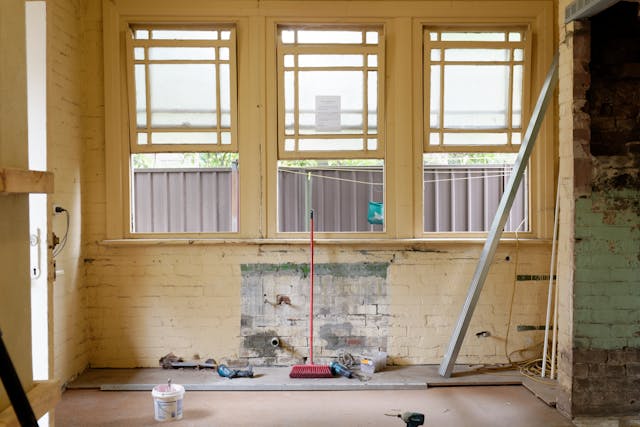
Finding the right commercial office space in the UK’s bustling cities, especially in London, is not just about square footage or the number of rooms; it’s about discovering a place where ambitions meet opportunity, where businesses can thrive and flourish. The right office spaces can inspire creativity, improve productivity, and make a lasting impression on clients and partners. In contrast, a poorly chosen space can lead to inefficiencies, decreased morale, and even lost opportunities.
We understand that the journey to finding the right commercial space can seem daunting, especially with the vast amount of options in London. However, with the right approach and guidance, this process can be streamlined and even enjoyable. As part of our commitment to support businesses in their growth journey, we’ve crafted this guide to simplify the process. Our promise to you is straightforward: by the end of this post, you’ll have a clear, step-by-step roadmap to navigate the London commercial real estate market with confidence.
So, whether you’re a startup looking for its first office, a growing business aiming to relocate, or an established firm wanting to expand its footprint, keep reading. Your ideal office space is just five steps away.
Step 1: Define Your Requirements
One of the foundational steps in your office space hunt is to have a crystal clear understanding of what you need. This isn’t merely about a ‘wish list’ but a strategic alignment of your business’s operations, growth projections, and brand image with the physical space you’ll occupy. Let’s dive into how you can categorically and methodically outline these requirements.
Determine Your Space Needs
- Approximate Square Footage: Before venturing into the vast commercial real estate market, determine the size of the space your business requires. This isn’t just about today but also the near future. As a rule of thumb, a typical office setup provides between 100 to 150 square feet per employee. However, your specific industry, the nature of job roles, and anticipated growth can all adjust this figure. A tech startup may require more open spaces for collaboration, whereas a law firm might need individual rooms for confidentiality.
- Number of Rooms or Open Spaces: Open plan or closed cabins? How many meeting rooms will you require? Would you benefit from breakout areas for informal discussions? Each business has its own operational rhythm, and your office layout should support and enhance this.
- Specific Facility Requirements: Beyond the basics, consider the specific facilities that will benefit your team. Do you need conference rooms equipped with state-of-the-art AV systems? Would a kitchenette or a coffee station enhance employee satisfaction? Remember, these facilities aren’t just about utility but also contribute to the overall culture and feel of your workplace.

Location Preferences
- Proximity to Transportation Hubs: In a sprawling city like London, commute times can significantly impact employee satisfaction and punctuality. An office that’s near major transportation hubs, be it underground stations, bus stops, or railway stations, can be a major advantage.
- Central vs. Greater London: While Central London offers prestige and proximity to major business districts, Greater London can offer larger spaces at more affordable rates. Consider where your clients, partners, and stakeholders are based and balance that against cost considerations.
- Nearby Amenities and Facilities: The immediate surroundings of your office can influence your employees’ daily lives and the impression you leave on visitors. Proximity to cafes, restaurants, gyms, or even parks can add to the attractiveness of your location.
Budget Constraints
- Price Range for Rent: Establish a clear budget for your office rent. This shouldn’t stretch your finances too thin, but it should also align with the facilities you want and the brand image you want to project.
- Hidden Costs: Beyond the headline rent figure, be aware of hidden costs. This includes maintenance fees, service charges, and parking costs. These can add up and should be factored into your overall budget.
- Flexibility in Rental Terms: The business world is dynamic, and your office space should offer the flexibility to scale up or down based on your needs. Whether it’s a short-term office lease, break clauses, or the option to expand within the office building, ensure you have room to manoeuvre.
In sum, defining your requirements isn’t just about the physical space, but how that space aligns with your business’s strategic goals, brand identity, and employee needs. As you progress in your search, this clarity will be invaluable, ensuring that you filter and select spaces that truly match your criteria.

Step 2: Do Your Research
Once you’ve clearly outlined your requirements, it’s time to delve into research. The London commercial real estate market is vast, dynamic, and multifaceted. Approaching it without ample research could be overwhelming, if not downright confusing. Here’s how to systematically gather the information you need.
Use Reputable Property Portals
- UK-specific Online Platforms: Numerous online platforms cater specifically to the UK commercial real estate market. Websites such as Zoopla, Rightmove, and Realla can provide a wealth of options, complete with photographs, specifications, and price details. Remember to filter your searches based on your previously defined requirements.
- Benefits of using London Office Space’s Portfolio: Here at London Office Space, we offer an expansive, ever-evolving portfolio that encapsulates Central and Greater London’s prime properties. Our selections aren’t just about variety; they reflect a careful curation based on quality, strategic location, and value. Our database is designed to streamline your search, ensuring that every listing aligns with the standards and demands of today’s businesses.
Visit Locations Virtually (if possible)
- Virtual Tours and 3D Views: The digital age has rendered physical visits not always necessary, at least for the initial stages. Many listings now come with 360° virtual tours or detailed 3D views, allowing you to experience the space without leaving your current office or home. This not only saves time but can also significantly narrow down your list.
- Online Reviews and Feedback: The lived experience of other businesses can provide invaluable insights. Check for reviews or testimonials related to the property, the landlord, or even the building’s management. Platforms like Google My Business or specific property review sites can give you a sense of what to expect.

Consider Local Market Conditions
- Current Rental Trends in London: The commercial property rental market isn’t static. Prices, demand, and availability constantly shift based on a multitude of factors. Stay updated with the current rental rates, especially in your desired areas, so you can negotiate with confidence.
- Areas of Growth and Potential: Certain regions in London are budding hubs for specific industries or offer unique opportunities due to development projects or infrastructure improvements. For instance, the East London Tech City, also known as Silicon Roundabout, has seen tremendous growth for tech startups. Being aware of these trends can help you spot areas that not only fit your current needs but also offer potential for future growth and networking.
Research is more than just finding spaces; it’s about understanding the landscape, spotting opportunities, and preempting challenges. With a combination of online resources, expert portfolios like ours, and an eye on market trends, you’re well-equipped to navigate the myriad commercial space options London has to offer.
Step 3: Visit Your Shortlisted Spaces
By now, you’ve filtered down your options to a few promising candidates. However, as any seasoned business leader will tell you, there’s a distinct difference between viewing a space online and experiencing it in person. This step is crucial. Physical visits not only allow you to verify information but also get a tangible feel for the environment your business might inhabit. Here’s how to make the most of these visits.
Schedule Visits
- Contacting Landlords or Agents: Once you’ve shortlisted properties, it’s essential to establish direct contact with the landlords or their representing agents. While emails are efficient, a phone call can often expedite the process and offer immediate clarifications. Remember, popular spaces in high-demand areas may have multiple interested parties, so it’s crucial to be proactive.
- Convenient Timing and Dates: When scheduling your visits, choose times that will give you a realistic impression of the property during working hours. For instance, visiting an office space during peak hours can help you gauge noise levels, natural lighting, and even traffic conditions.

Things to Look for During Visits
- Check for Damage or Necessary Repairs: While landlords should ideally address these before a new tenant moves in, it’s wise to keep an eye out. Look for issues such as leakages, broken fixtures, or faulty electrical points. These can form negotiating points and may also influence your final decision.
- Assess the General Vibe and Surrounding Area: Pictures might show the space, but the ‘feel’ of an office can only be experienced in person. Consider the building’s general upkeep, the professionalism of security or reception staff, and even interactions with potential neighbours. Furthermore, take a short walk around the block. Are there suitable places for lunch, coffee breaks, or after-work activities? This can significantly impact the daily lives of your team.
- Potential for Customisation and Branding: Every company has its unique culture and brand identity. Observe whether the office space allows for modifications, whether it’s painting, reconfiguring layouts, or putting up branding elements. Your office isn’t just a place to work; it’s an extension of your brand.
Ask the Right Questions
- Lease Terms and Conditions: Understand the duration of the office lease, renewal options, and any clauses that allow for early termination. This not only impacts your immediate future but also provides flexibility as your business evolves.
- Additional Costs or Fees: As mentioned earlier, the headline rent might just be the tip of the iceberg. Are there service charges, maintenance fees, or additional costs for facilities like parking? Get a clear breakdown.
- Restrictions or Regulations for the Building: Some office buildings might have specific rules, be it operational hours, restrictions on modifications, or even policies about client visits. Ensure there won’t be any unexpected surprises post-move.
Physical visits are more than just a box-ticking exercise; they’re about vision. Can you envision your team working there? Can you see your clients being impressed during visits? By being meticulous and observant during these visits, you inch closer to making a well-informed, confident choice for your business’s next big step.

Step 4: Negotiate Terms
Locating the ideal office space is only half the battle. The next crucial step lies in ensuring that the terms of occupancy align with your business’s interests and provide the flexibility needed in a constantly evolving marketplace. Negotiation, when done strategically, can yield terms that are mutually beneficial for both tenant and landlord. Here’s a guide to ensure you approach this phase with foresight and finesse.
Know Your Worth
- The Power of Being a Good Tenant: Landlords appreciate tenants who are responsible, timely with their payments, and intend to maintain the property well. Highlight your business’s stability, previous rental histories, and long-term intentions. A reliable tenant can sometimes be more valuable than a slightly higher rent.
- Market Research to Back Your Negotiation: Information is power. If you’ve done comprehensive market research (as advised in Step 2), you’ll be armed with knowledge about current rental rates, trending terms, and standard lease conditions in the area. This information can be pivotal in ensuring you don’t overcommit or undersell yourself.
Discuss Flexible Leasing Options
- Short-term vs. Long-term: While a long-term office lease can offer security and potentially better rates, short-term leases provide flexibility. Depending on your business projections, discuss terms that give you the optimal balance. Some landlords might even offer rent reductions or perks for longer commitments.
- Options for Expansion or Downsizing in the Future: Business trajectories aren’t always linear. Your space requirements today might be different a few years down the line. Negotiate clauses that allow for expansion within the same office building or complex. Similarly, ensure there are provisions to downsize without severe penalties, should the need arise.

Get Everything in Writing
- Importance of Clear Documentation: Oral agreements or understandings can lead to misunderstandings or disputes in the future. Every term, condition, and mutual understanding must be clearly documented. This includes rent amounts, payment dates, maintenance responsibilities, and any other specifics relevant to your arrangement.
- Reviewing Lease Agreements with a Legal Expert: Commercial lease documents can be intricate, with nuances and clauses that might escape the untrained eye. It’s always wise to have these documents reviewed by a legal expert, preferably one with experience in commercial real estate in London. This ensures that your interests are protected, and there are no hidden clauses that could become contentious later.
In the grand scheme of things, the art of negotiation isn’t just about securing the best price, but terms that align with your business’s operational needs and future projections. Approaching this step with preparation, professionalism, and clarity ensures that your business finds not just a new commercial space to occupy, but a genuine asset that supports the journey ahead.
Step 5: Finalise and Move In
The culmination of your meticulous research, visits, and negotiations now leads to this final step: making the space your own and setting the stage for your business’s next chapter. But even in this last stretch, attention to detail and thorough planning can set the tone for a seamless transition and a prosperous tenure.
Final Checks and Paperwork
- Ensuring Everything is as Agreed Upon: Before signing on the dotted line, do a walkthrough of the space with the landlord or agent. Ensure any agreed-upon repairs or modifications have been completed. Cross-check that all terms documented in the lease align with your negotiations.
- Setting Up Utilities and Services: Before you move, coordinate the setup or transfer of essential utilities, such as electricity, water, and internet. This ensures that from day one, your operations can commence without hitches. Additionally, inform relevant service providers, like mail and delivery services, about your new address.

Plan a Smooth Move
- Organising Professional Movers: Opting for professionals who specialise in commercial moves can alleviate potential stressors. They are equipped to handle office equipment, furniture, and the logistical challenges of relocating a business. Get quotations, check reviews, and ensure they’re insured before finalising your choice.
- Designing and Setting Up the Space: An office isn’t merely desks and chairs; it’s an embodiment of your brand and company culture. Engage with an interior designer or space planner, if budget allows, to create an environment that’s both functional and reflective of your brand’s identity. Remember to factor in growth — having flexible spaces that can adapt to future needs is a wise move.
Celebrate and Network
- Hosting an Office-Warming Event: Once settled, consider hosting an event to mark this new beginning. This can be a casual get-together for your staff, or a more formal event where clients, partners, and other stakeholders are invited. It’s a great way to showcase your new space and foster stronger business relationships.
- Joining Local Business Communities or Groups: Immersing yourself in local business networks can be incredibly beneficial. Whether it’s joining a business chamber, attending local seminars, or being part of community initiatives, such engagements not only elevate your brand presence but also open doors to collaborations, partnerships, and new opportunities.
Securing the ideal office space and moving in is a significant milestone, but it’s just the beginning. As you settle into your new environment, embrace the opportunities it presents, foster connections within the community, and let this new space be the foundation for countless successes, innovations, and growth stories.

Rent Office Space Today with London Office Space
Navigating the intricate commercial real estate sector can be complex, but with the right roadmap, it becomes a lot more manageable. As we’ve outlined, finding the ideal office space in London boils down to five critical steps: defining your requirements, doing thorough research, visiting prospective locations, negotiating favourable terms, and finally, making the seamless transition to your new workspace.
But remember, you don’t have to be in this alone. We at London Office Space can work as your ally. With over a decade of experience, an expansive portfolio of prime properties across Central and Greater London, and a commitment to offering no-strings-attached, cost-free assistance, we are primed to help you locate the perfect office solution.
Whether you’re in the market for coworking spaces, private executive suites, hot desks, or short-term offices, our vast selection has something tailored for every unique requirement.
We invite you to explore the diverse properties available through our search tool. Dive into all the new office space possibilities and envision where your next business success story will unfold.
For more personalised guidance on how to find commercial real estate that’s right for you and on the renting or leasing process, please don’t hesitate to reach out by calling 020 395 9617. Our dedicated team is ready to assist, ensuring your office hunting experience is both efficient and rewarding.
Your ideal office space is out there, waiting to be discovered. Let’s embark on this exciting journey together.
To learn more about leasing office space and London’s commercial real estate market, have a read of some of our most recent articles, below.
Sustainable Workspaces: How Office Spaces in London Are Adopting Eco-Friendly Practices
Mastering the Art of the Office Seating Plan
Comparing Office Space Cost: Central London vs Outer London
Prime Locations for Office Space, Central London
Harnessing Clean Technology: Five Strategies for Energy-Efficient Office Spaces
Shining a Light on How Office Lighting Fuels Employee Creativity
Types of Commercial Leases in the UK: What You Need to Know
Wellness in Office Design: Gearing Offices for the Wellness Generation
